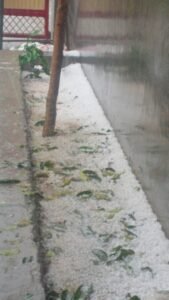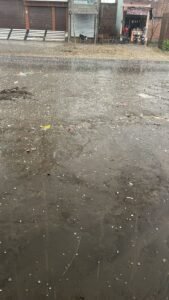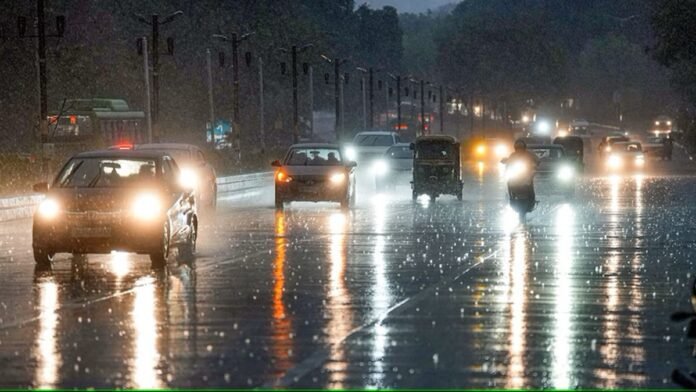Summary
|
The recent overnight rain in the national capital has offered a temporary reprieve from the suffocating grip of toxic air that has plagued Delhi and its surrounding regions for the past week. This development comes amidst a crucial hearing in the Supreme Court, where solutions ranging from artificial rain to the ‘Odd-Even’ formula are under consideration to address the persistent pollution crisis. As the nation awaits the court’s decision, the Delhi government is actively exploring measures to combat air pollution, including fully funding an artificial rain pilot project. This article delves into the aftermath of the rain, the ongoing Supreme Court hearing, and the multifaceted efforts to tackle Delhi’s air quality crisis.
ALSO RAED| Delhi Shivers Coldest Morning of the Season at 3.9°C, Further Drop Expected Today.
Impact of Overnight Rain
The recent light rainfall in several parts of Delhi, spanning Thursday night to Friday morning, has significantly contributed to lowering pollution levels in the region. After enduring seven consecutive days of hazardous air quality, residents are finally experiencing a much-needed respite. The rainfall is a welcome development, coinciding with the Delhi government’s concerted efforts to implement various solutions aimed at curbing air pollution. Among these solutions, artificial rain has gained attention as a potential game-changer in the battle against toxic air.
Supreme Court Hearing on Pollution Solutions
The Supreme Court is set to address the critical issue of air pollution in a hearing that is expected to evaluate proposed solutions, including artificial rain and the implementation of the ‘Odd-Even’ formula. The court’s decision on whether to endorse these measures, particularly the ‘Odd-Even’ formula, will be closely watched, considering the potential implications for traffic regulations and public behavior in the national capital. The court’s stance on these measures, especially considering the novelty of artificial rain, will have far-reaching consequences for Delhi’s environmental management.

Artificial Rain
- A New Frontier in Pollution Mitigation: Artificial rain, a concept that has gained traction globally, is now being actively considered by the Delhi government as part of its pollution mitigation strategy. Gopal Roy, Delhi’s Environment Minister, has mentioned this as a potential solution since September. However, the implementation of artificial rain requires careful consideration, budgetary approvals, and regulatory clearances. The Delhi government, in a recent decision, has committed to fully funding two phases of an artificial rain pilot project. If approved, this initiative is slated to take place between the 20th and 21st of November.
- The ‘Odd-Even’ Formula Revisited: Another solution under the Supreme Court’s scrutiny is the ‘Odd-Even’ formula, a traffic regulation strategy previously implemented in Delhi to reduce vehicular emissions during high pollution periods. The court’s deliberation on the efficacy and feasibility of reintroducing this formula, especially in the context of the upcoming festive season, will be pivotal in determining short-term pollution control measures.
- Delhi Government’s Comprehensive Approach: The Delhi government, cognizant of the urgency to address the pollution crisis, has deployed ministers to inspect various areas and borders connecting Delhi to neighboring states. The government’s proactive stance includes measures such as banning app-based taxis registered in other states from entering Delhi during the critical period leading up to and after Diwali. These inspections aim to ensure the effective implementation of anti-pollution measures and gauge their impact on air quality.
ALSO READ| Artificial Rain In Delhi.

Long-Term Vision and Public Health
While the immediate focus is on alleviating the current pollution levels, the Supreme Court and the Delhi government must also consider the long-term vision for environmental sustainability. Balancing short-term measures with the need for a comprehensive, sustainable strategy is crucial to ensure the well-being of Delhi’s residents and the preservation of the city’s environment.
In conclusion, the recent overnight rain in Delhi offers a brief respite from the suffocating grip of pollution, but it also highlights the urgency for effective, sustainable solutions. As the Supreme Court weighs the pros and cons of measures such as artificial rain and the ‘Odd-Even’ formula, the Delhi government’s proactive approach underscores the gravity of the situation. The battle against air pollution in the national capital requires a multi-faceted strategy, combining innovative solutions, regulatory measures, and public awareness to safeguard the health and well-being of millions of residents.


Outstanding feature